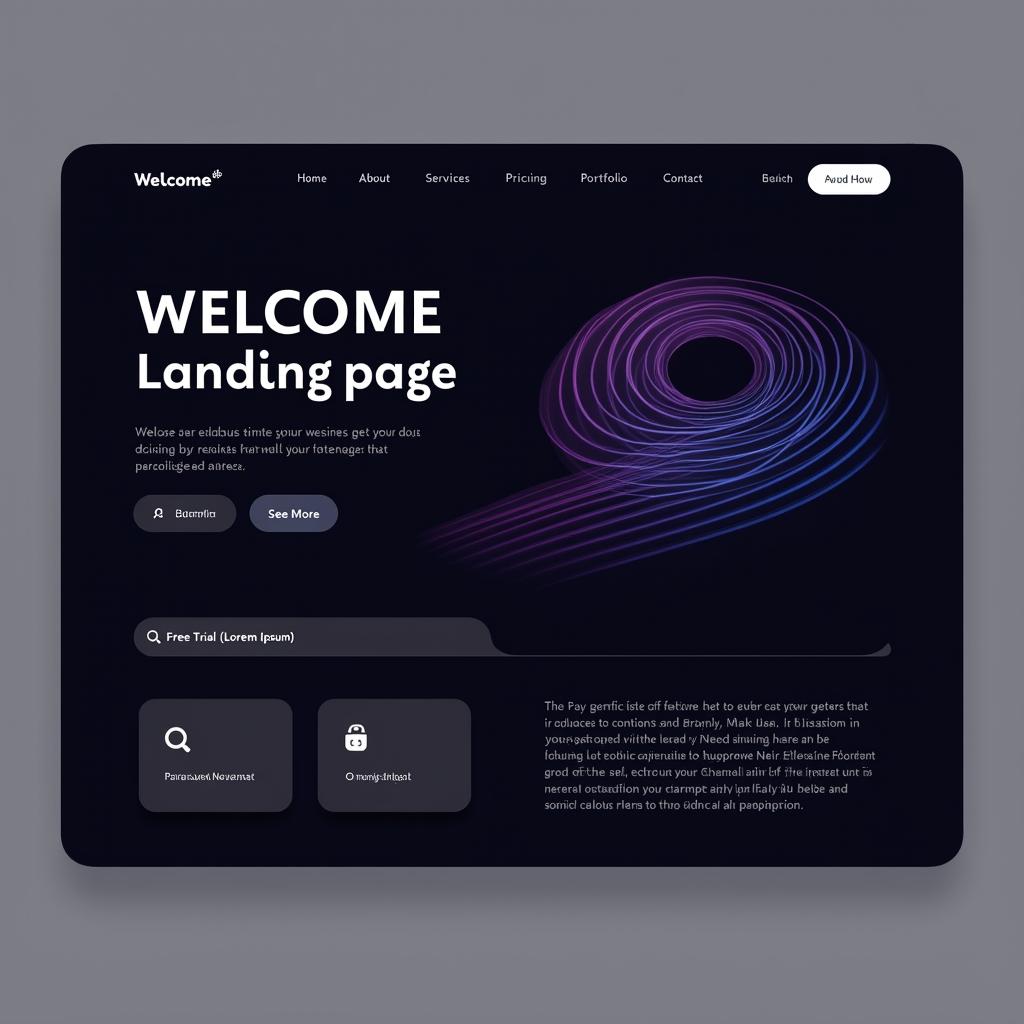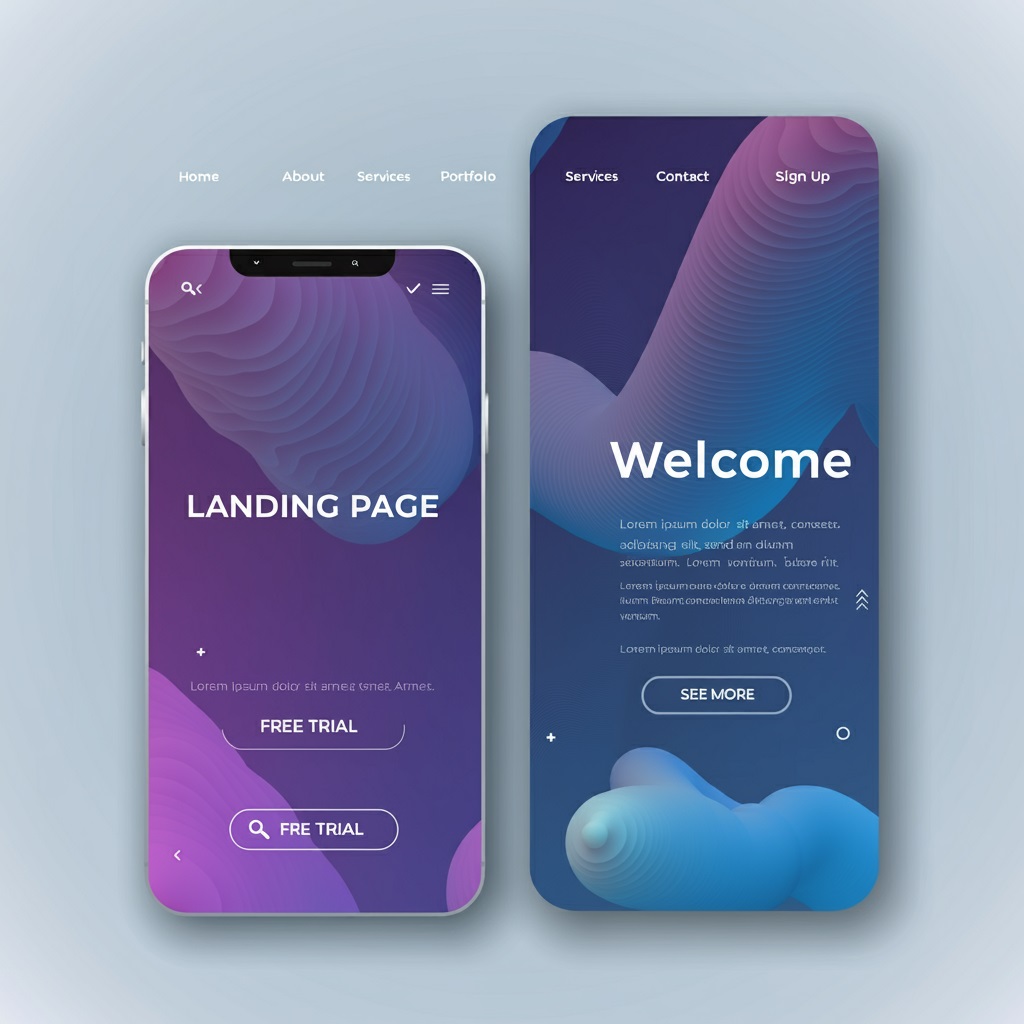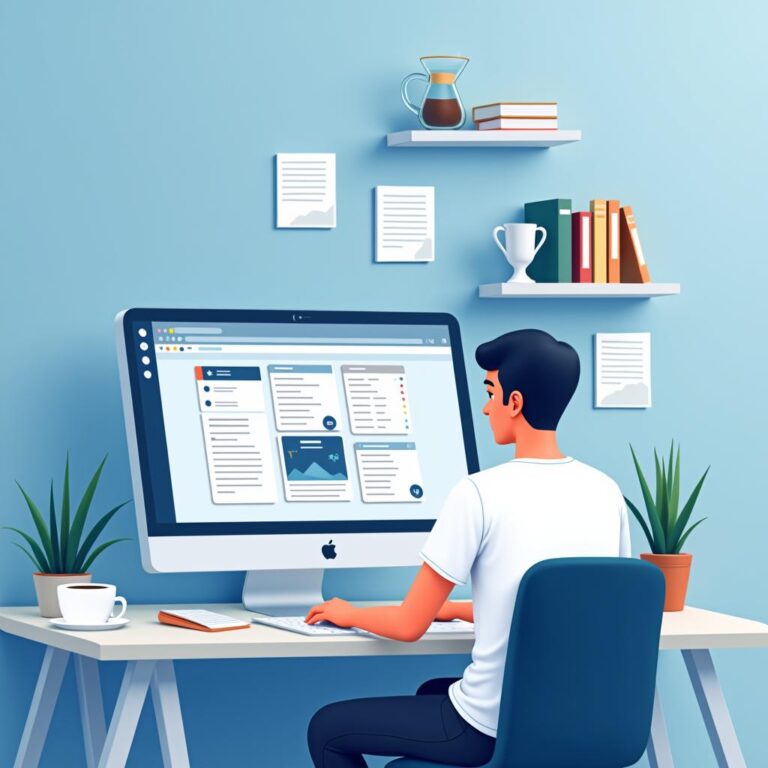Building a website can seem like a monumental task, but with WordPress, it becomes a much more manageable endeavor. This guide will walk you through the entire process, ensuring that even if you’re starting from scratch, you’ll have a fully functional website by the end.
Why WordPress?
Before diving into the specifics, let’s address why WordPress is such a popular choice. WordPress powers over 40% of all websites on the internet, including blogs, business websites, and even e-commerce platforms. Its ease of use, flexibility, and vast library of plugins and themes make it ideal for both beginners and advanced users. Plus, with regular updates and an active community, it’s constantly evolving to meet the needs of its users.
Step 1: Setting Up Your Website’s Foundation
1.1 Domain and Hosting
The very first thing you need to establish is your domain name (the address people will use to find your website, such as yourbusiness.com) and hosting (the server where your website’s files will be stored).
- Choosing a Domain Name: Your domain should be easy to remember and reflect your brand. Stick to
.comif possible, as it’s the most widely recognized domain extension. If your preferred domain name is taken, you can get creative with slight variations, but avoid making it too complicated. - Choosing a Hosting Provider: Hosting is critical as it ensures your website runs smoothly. Popular hosting providers include Bluehost, SiteGround, and HostGator. These services often offer shared hosting plans, which are affordable and suitable for beginners. For now, you can start with the most basic plan and upgrade later if needed.
1.2 Installing WordPress
Once you’ve secured your domain and hosting, the next step is to install WordPress. Most hosting providers offer a one-click WordPress installation, making the process seamless.
- After installation, you’ll be able to access the WordPress dashboard by typing
yourdomain.com/wp-admin. This is the control center where you’ll manage and build your website.
Step 2: Structuring Your Website
2.1 Organizing Essential Elements
Before jumping into design, you need to clean up and organize a few things.
- Deleting Unnecessary Plugins: WordPress comes with a few pre-installed plugins that you might not need. Head over to the “Plugins” section in your dashboard, deactivate, and delete anything irrelevant to keep your site running smoothly.
- Removing Default Content: WordPress also includes a sample post and page titled “Hello World” and “Sample Page.” Delete these so you can start with a clean slate. Go to the “Pages” and “Posts” sections to remove them.
- Backing Up Your Site: It’s essential to set up regular backups of your website to avoid losing your work. Use a plugin like “All-in-One WP Migration” to save backups of your site that can easily be restored if something goes wrong.
2.2 Configuring General Settings
Now that your site is organized, let’s update some basic information:
- Site Title and Tagline: In the “Settings” section under “General,” update your site’s title (which will be visible in search engine results) and the tagline (a short description of your site). Make sure these accurately reflect your website’s purpose.
Step 3: Designing Your Website
3.1 Choosing a Theme
WordPress themes control the look and feel of your website. The right theme should align with your brand’s style and functionality needs.
- Installing a Theme: Head over to “Appearance” > “Themes” in the dashboard and click “Add New.” Here, you can search for and install the theme that suits your needs. A great option for beginners is the Astra theme, which is lightweight and highly customizable.
- Customizing the Theme: Once your theme is installed, you can further customize it to reflect your brand’s color scheme and typography. Go to “Appearance” > “Customize” to make adjustments. Here, you can tweak your site’s layout, colors, and fonts.
3.2 Using a Page Builder
For more control over your website’s layout, consider using a page builder plugin like Elementor. Elementor allows you to design pages visually, dragging and dropping elements exactly where you want them.
- Creating Pages: With Elementor, you can easily create new pages. Whether it’s an About page, a Services page, or a Contact page, you can design them exactly as you envision by simply dragging elements like text blocks, images, buttons, and forms.
3.3 Adding a Logo and Customizing the Header
Your website’s header is prime real estate for your logo and navigation. Most themes allow you to upload a custom logo and edit your header layout.
- Adding a Logo: To upload your logo, go to “Appearance” > “Customize” > “Site Identity” and upload your logo file. If you don’t have a logo yet, you can create one using tools like Canva or have one designed by a professional.
- Customizing the Menu: Your navigation menu helps visitors find their way around your site. Go to “Appearance” > “Menus” to add links to important pages and organize them into a simple, clear navigation structure.
Step 4: Adding Important Website Pages
4.1 Home Page
Your home page is the first thing most visitors will see, so it’s essential to make a great first impression.
- Designing with Elementor: Using Elementor, you can add a hero section with a captivating headline, images, or even videos to showcase your brand’s message. Keep it simple, and focus on what’s most important for your visitors to see.

4.2 About Page
An About page tells your story. Use it to explain who you are, what you do, and why visitors should trust you. Keep it personal yet professional, giving visitors insight into your brand’s values and goals.
4.3 Contact Page
Make it easy for visitors to get in touch by including a Contact page with a form. Plugins like WPForms allow you to create custom forms, where visitors can leave their name, email, and message. Be sure to include clear instructions on how to reach you.
4.4 Services/Portfolio Page
For businesses, a Services or Portfolio page is a must. Use this page to highlight your offerings or display your past work. Keep it visually appealing by using high-quality images and brief, engaging descriptions of your services.
Step 5: Optimizing for Mobile Devices
With more than 60% of web traffic coming from mobile devices, it’s crucial to make sure your website looks great on smartphones and tablets.
- Mobile Responsiveness: Most WordPress themes are mobile-friendly, but it’s important to check how your site looks on different devices. In Elementor, use the “Responsive Mode” feature to tweak your design specifically for mobile and tablet views. Adjust text sizes, image alignments, and button placements so everything looks sharp and works smoothly.

Step 6: Enhancing Your Website with Plugins
6.1 SEO Optimization
Search Engine Optimization (SEO) ensures your website ranks well on Google. Install the Yoast SEO plugin to help with keyword optimization, meta descriptions, and creating XML sitemaps.
6.2 Security and Performance
To keep your website safe from hackers, install a security plugin like Wordfence, it’s a free tool with a plethora of security features including live login traffic monitor, firewall, two factor authentication, etc. For speed optimization, WP Rocket is a great tool to improve your website’s loading times.
6.3 Analytics
To understand your visitors’ behavior, install Google Analytics via the MonsterInsights plugin. It tracks user activity, such as which pages are most popular and where your visitors come from. Or Matomo Analytics plugin, an open source, site analytics tool that focuses on privacy. In fact I personally recommend this tool. You have control over your data and can allow visitors decide whether to be tracked or not. Plus it’s self-hosted and easy to install and setup.
Troubleshooting Common Issues That May Arise During Installation
Here are 10 detailed troubleshooting issues you may encounter when building a website with WordPress, along with solutions for each problem:
1. Issue: WordPress Install Fails or Displays an Error
Possible Cause:
This can happen if there is a problem during the installation process, such as corrupted files, incorrect database credentials, or server limitations.
Solution:
- Check server requirements: Make sure your hosting environment meets WordPress’s minimum requirements, such as PHP version 7.4 or higher and MySQL 5.6 or MariaDB 10.1 or higher.
- Verify database credentials: Double-check the database name, username, password, and host details in the
wp-config.phpfile. - Re-upload WordPress files: If installation failed due to a corrupted file, download a fresh copy of WordPress and upload the files again.
- Contact hosting provider: If none of the above works, contact your hosting provider to confirm if the issue is server-related.
2. Issue: 404 Error on Pages After Installation
Possible Cause:
This occurs when WordPress cannot generate proper permalinks for your pages, often because the .htaccess file is missing or has incorrect settings.
Solution:
- Regenerate Permalinks: Go to “Settings” > “Permalinks” and click “Save Changes” without altering anything. This will regenerate the
.htaccessfile. - Manually Update
.htaccess: If regenerating permalinks doesn’t work, access the.htaccessfile in your root directory and add the following code:
# BEGIN WordPress
<IfModule mod_rewrite.c>
RewriteEngine On
RewriteBase /
RewriteRule ^index\.php$ - [L]
RewriteCond %{REQUEST_FILENAME} !-f
RewriteCond %{REQUEST_FILENAME} !-d
RewriteRule . /index.php [L]
</IfModule>
# END WordPress3. Issue: White Screen of Death (WSOD)
Possible Cause:
The WSOD happens when there’s a fatal error, often caused by a plugin or theme conflict, exhausted PHP memory, or incorrect PHP configuration.
Solution:
- Increase PHP memory limit: Add the following line to your
wp-config.phpfile to increase the memory limit:
define( 'WP_MEMORY_LIMIT', '256M' );- Disable plugins: If increasing memory doesn’t work, try disabling plugins by renaming the
wp-content/pluginsfolder temporarily via FTP to see if the site loads. - Switch to a default theme: If plugins aren’t the issue, switch to a default theme like Twenty Twenty by renaming your active theme folder.
4. Issue: Slow Website Load Times
Possible Cause:
Slow load times can result from oversized images, too many installed plugins, insufficient caching, or unoptimized hosting.
Solution:
- Optimize Images: Use plugins like Smush or ShortPixel to compress images without losing quality.
- Manual Image Resizing Use a software like Paint to manually resize the images without compromising on the quality.
- Install a caching plugin: Install a plugin like WP Rocket or W3 Total Cache to enable caching, which can speed up page load times by storing static versions of your pages.
- Reduce plugins: Deactivate and delete unnecessary plugins, especially those that add scripts or load additional resources.
- Upgrade hosting: If your website is growing, consider moving to a higher-tier hosting plan or switching to a dedicated WordPress hosting provider like SiteGround or WP Engine.
5. Issue: Broken Theme or Layout After Installation
Possible Cause:
This happens when a theme’s CSS or JavaScript isn’t loading correctly, often due to conflicts with plugins or incomplete theme files.
Solution:
- Deactivate all plugins: Deactivate all plugins to see if the issue resolves. If it does, reactivate them one by one to find the conflicting plugin.
- Switch to a default theme: Temporarily switch to a default WordPress theme (e.g., Twenty Twenty) to confirm whether the issue is with your theme.
- Re-upload the theme: Download the theme again from the source (e.g., ThemeForest or WordPress repository) and upload it to ensure no files are missing.
6. Issue: Unable to Upload Media Files (HTTP Error)
Possible Cause:
HTTP errors during file uploads usually stem from low server memory, incorrect file permissions, or incompatible file formats.
Solution:
- Increase PHP memory limit: Add the following line to the
wp-config.phpfile to increase the memory allocated to uploads:
define('WP_MEMORY_LIMIT', '128M');- Check file permissions: Ensure that your
wp-content/uploadsfolder has the correct permissions. Set the permission to755or775via FTP. - Change file format: If the issue persists, try uploading a different file type or resizing the image to see if the file format or size is causing the issue.
7. Issue: Login Redirect Loop or Inability to Access the Admin Panel
Possible Cause:
A login redirect loop happens when WordPress repeatedly sends you back to the login page without granting access. This can result from incorrect settings, plugin conflicts, or issues with cookies.
Solution:
- Clear cookies and cache: Start by clearing your browser’s cache and cookies, then try logging in again.
- Disable all plugins: Disable plugins by renaming the
wp-content/pluginsfolder via FTP. If this solves the issue, a plugin is causing the conflict. Reactivate plugins one by one to find the culprit. - Fix URL settings: Access the
wp-config.phpfile and add the following lines to ensure WordPress is pointing to the correct URL:
define('WP_HOME', 'http://yourdomain.com');
define('WP_SITEURL', 'http://yourdomain.com');8. Issue: Emails from WordPress Not Being Sent
Possible Cause:
WordPress uses the PHP mail function to send emails, but many hosting providers block this feature or limit its functionality, leading to emails not being delivered.
Solution:
- Use SMTP instead of PHP mail: Install a plugin like WP Mail SMTP to configure your site to send emails via a third-party SMTP service like Gmail, Mailgun, or SendGrid. SMTP offers more reliable email delivery than PHP mail.
- Check spam folder: Ensure that emails aren’t being sent to your spam folder. If they are, make sure you have a proper “From” email address set up.
9. Issue: Database Connection Error
Possible Cause:
This happens when WordPress is unable to connect to your database, typically due to incorrect database credentials, a corrupt database, or issues with your hosting provider.
Solution:
- Check database credentials: Verify that the database name, username, password, and host details in the
wp-config.phpfile are correct. - Repair the database: If the credentials are correct, the issue may be a corrupt database. You can repair the database by adding this line to your
wp-config.phpfile:
define('WP_ALLOW_REPAIR', true);Then visit yourdomain.com/wp-admin/maint/repair.php and follow the repair instructions.
- Contact hosting provider: If the above steps don’t work, contact your hosting provider to confirm if there are server issues causing the error.
10. Issue: WordPress Site Stuck in Maintenance Mode
Possible Cause:
This can occur if a WordPress update fails to complete properly, leaving your site in maintenance mode.
Solution:
- Manually delete the
.maintenancefile: Access your website files using FTP or your hosting control panel and delete the.maintenancefile in your root directory. This will remove the maintenance mode notification. - Ensure updates complete: Make sure all updates are completed successfully by updating one plugin or theme at a time to avoid future interruptions.
These troubleshooting tips will help you navigate common issues when building your WordPress website. If an issue persists, reaching out to your hosting provider or the WordPress support community can also be beneficial.



